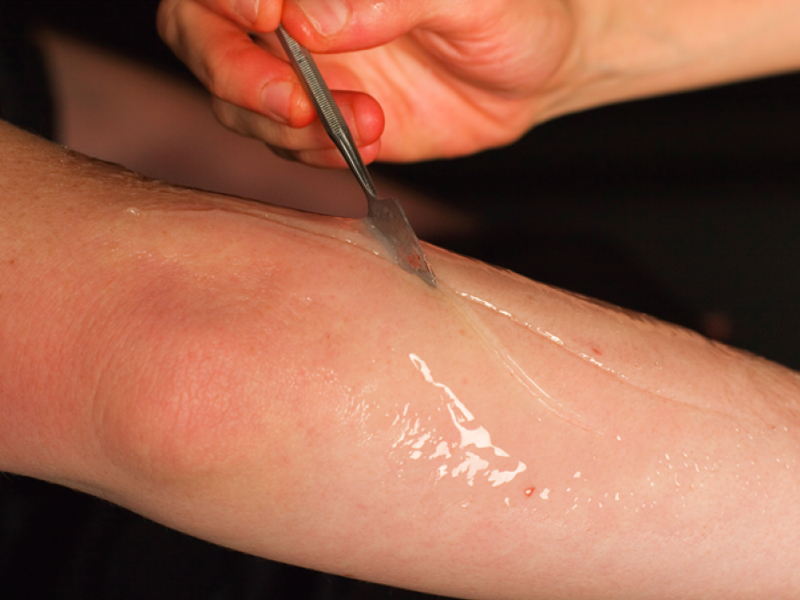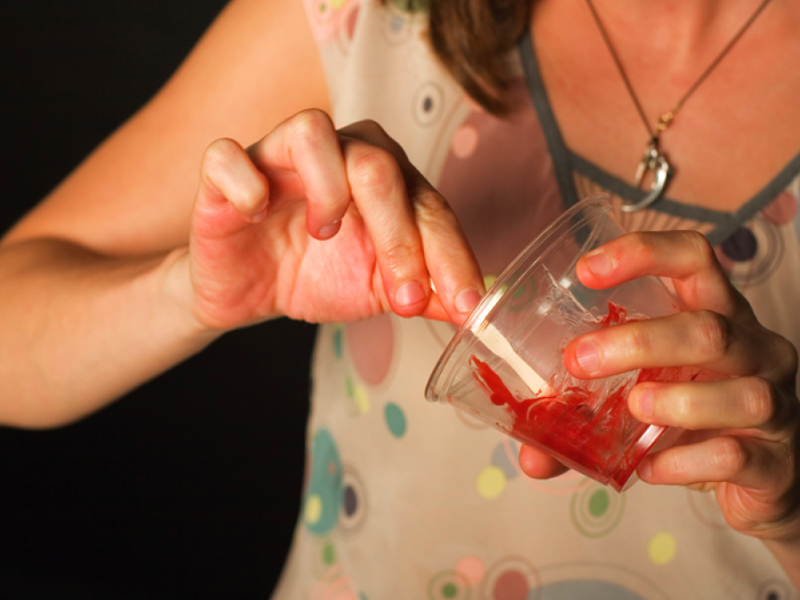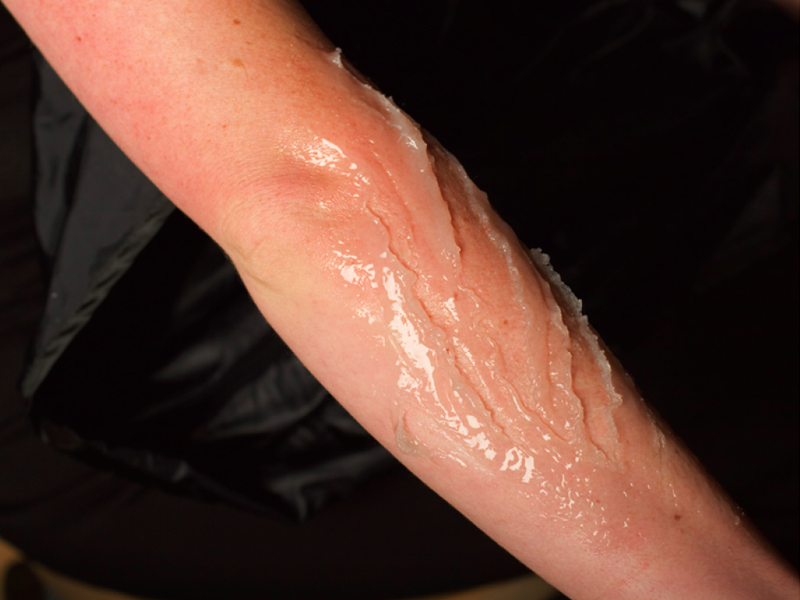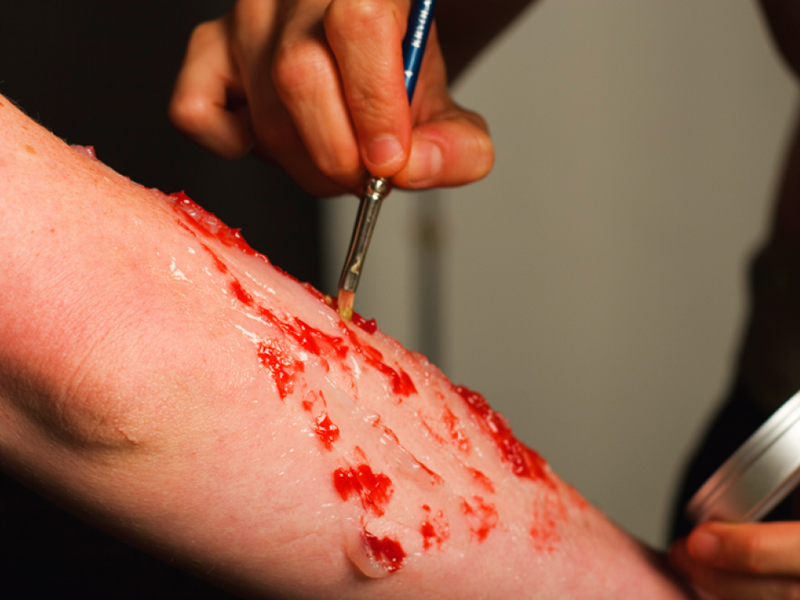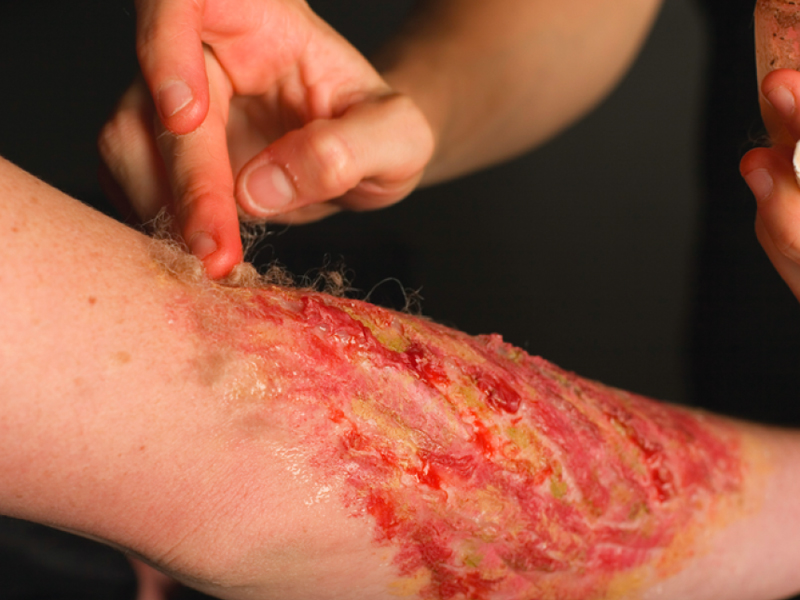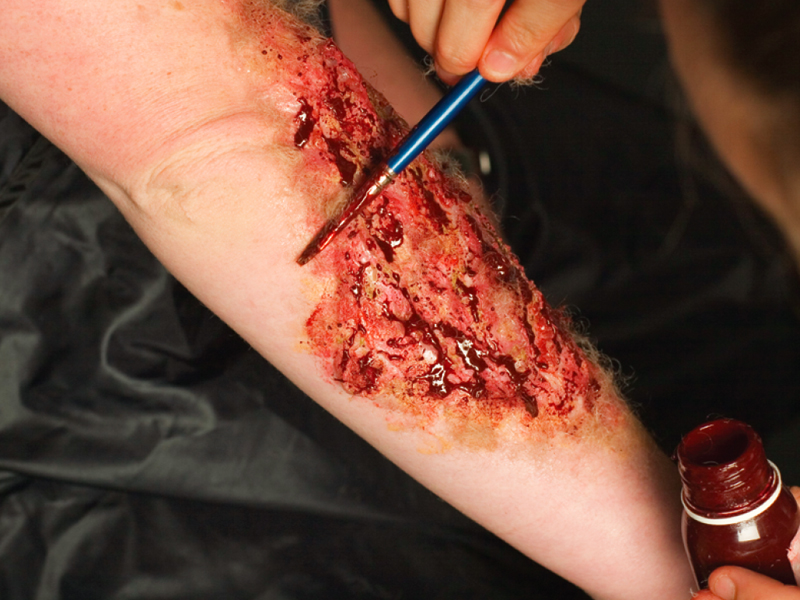By Courtney Mault and Max Sparber
Liquid latex rubber is great for wound makeup, large and small. Courtney likes to use it to create small flaps of skin for a skinned knuckle, which are convincing enough that when she occasionally wears her makeup to work as a prank, employers have insisted that she seek first aid and write a medical report, even after she has explained that her injury is just makeup.





